-
Posts
58 -
Joined
-
Last visited
Content Type
Profiles
Forums
Blogs
Gallery
Events
Store
Posts posted by camelneck
-
-
Thanks to both of you for the excellent information. I really appreciate it.
The more I think about that particular auction, it might just have been listed as "original" and "not an original period piece". It was over a year ago and its hard to remember the exact words. Thanks again.
0 -
Thanks for the info. I really appreciate it.
0 -
Last year, I bought a Friedrich-August Cross 1st class from the Thies Auction (USA). Before I bought it, I noticed that it looked a little smaller than the normal-size 1st class F-A Cross, so I only placed a bid of $35. However, that was enough to win the cross. (BTW, it was listed as an original period piece and not a reproduction.)
When I received the cross, I measured it and found it to be around 38 to 39mm wide which is the width for a 2nd class cross. (I believe most (if not all) first class crosses have a width of 44 to 45mm.) I might also add that my FA cross is non-magnetic, but I'm aware that many of these were made of blackened bronze or zinc. (My cross appears to be made of zinc or white metal.)
I think it might be a private-purchase piece from the 1920's or 1930's. However, I thought I would ask for some opinions since I don't claim to be an expert on this particular award.
(FWIW, the white substance on the left arm (reverse side) of the cross was residue from a sticker that has since been removed.)
0 -
-
About 8 months ago, I bought a Floch EK1 (99% sure it is a Floch) from an online auction house, East Bristol Auction (UK). I might add that the auction house didn't claim it was an original piece so I thought it might be a Floch when I bought it. (I kind of wanted a Floch for future reference and I only paid $60 so I'm not complaining.)
I do have a couple of questions about Floch EK1's::
1) When (what era) were Floch's made? I'm willing to bet that the piece I have is at the very least 40 to 50 years old maybe a lot older.
2) Somebody once told me that Floch's (or at least some of them) were private purchase pieces that were made in the 1950's and 60's. He said they were sold to soldiers and tourists who wanted cheap war souvenirs. Is there any truth to this?
3) Many militaria dealers are now selling reproductions (as reproductions) and their businesses seem to be thriving. I've seen some who sell cheap, one-piece iron cross reproductions for around $20. Others sell nicer 3-piece iron crosses for $40 - $50 and there are a few who sell very convincing reproductions for prices that range from $80 to $120. That being said, what would an "advertised Floch EK1" that is in good condition be worth? (By "advertised", I mean a Floch EK1 that is being sold as a reproduction.)
0 -
On 2/12/2006 at 14:32, Gary B said:
1 more 5 place
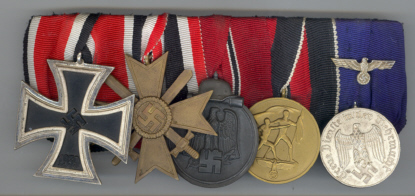

Wow, Gary, did you rob a museum! :) Most of my medal bars have ribbons with a bit of dirt and a couple of them have a small stain or two. Every one of your bars look like they were put under glass in a museum as soon as they were made. Awesome collection!
0 -
22 minutes ago, Carol I said:
No problem, David, with the misunderstanding. I agree that authenticity could be hard to prove in many cases and for that very reason one needs to continuously study collection pieces to observe and compare details and weed out doubtful pieces or combinations. Regarding restoration, some parts could indeed be hard to find and I would advise a correct replacement ribbon to a period, but wrong one. Good luck with your search.
Hi Carol,
Thanks for your understanding! I really appreciate your helpful comments. Patience is a virtue when it comes to looking for the proper medal and ribbon.
David
0 -
Hi Carol,
I now see where this exchange went sour and I will take the blame for it all. When I wrote "It is on the peacetime ribbon with rosette for Type 1 (WW1) Order of the Crown, instead of the peacetime ribbon for Type 2 (WW2) Order of the Crown", I should have never wrote the 2nd "peacetime". It was a typo that I never caught until you pointed it out. When I wrote the paragraph that contained the above sentence, I was trying to give a brief (yet totally unnecessary) explanation as to why I asked my original question. Thus when I wrote my last comment, I must admit that I was a bit miffed because It never dawned on me that such an afterthought would draw so much criticism or I would have drafted a more careful explanation. However, now that I understand your point of view, I was wrong to view your comments as a personal attack and I apologize for being so defensive.
You wrote, "Some dealer practices are indeed questionable, to say the least, and one should strive to restore the award to its original condition, including matching the ribbon with the award." I totally agree with your sentiments and I believe it is our duty to try and preserve history the best we can. But on the other hand, while this sounds nice in theory, one has to remember that these awards are nearly 80 years old and I'm certain that the majority of these awards no longer come with the original ribbon that came with them during the presentation ceremony. Just because an award comes with a vintage WW1 ribbon, one has no way of knowing if this is the original ribbon that came with the award, a correct vintage replacement ribbon, an incorrect vintage replacement ribbon, a correct modern replacement ribbon, or an incorrect modern replacement ribbon. (Of course, most collectors can differentiate between a vintage replacement ribbon and a modern replacement ribbon.)
So what should we do with the awards that are being sold without ribbons? Let them go forever ribbonless or try and find them a proper replacement ribbon even if we aren't sure that the replacement ribbon is the original ribbon?
I've heard of crooked dealers and collectors who intentionally put non-combat ribbons on combat awards (and vice-versa) in order to sell them for a lot more money. This is especially common if the same ribbon is used for more than one award. In this particular case, they remove vintage ribbons from the cheaper awards and put them on more expensive, yet naked, awards. Thus, I think it is naive to think that just because a medal comes with a vintage ribbon this means that it is the original ribbon unless the award comes with a certificate of authenticity. As these awards continue to changed hands, this degree of uncertainty will only increase as time progresses.
1 hour ago, Carol I said:I think there must have been a misunderstanding because this is what you wrote:
I understand now that you must have the wartime insignia with swords through the centre of the cross.
Some dealer practices are indeed questionable, to say the least, and one should strive to restore the award to its original condition, including matching the ribbon with the award.
This puzzles me again. I do not understand how using a peacetime ribbon for a wartime insignia would be better than using the existing ribbon. Both are wrong ribbons for the wartime insignia.
This being said, I wish you good luck to your search for the proper wartime insignia. One solution would be to look for crosses in very poor condition, but with the right ribbon.
One could argue that Romania did get involved much earlier when it allowed the passage of the Polish treasury and elements of the Polish army, but I was referring to the issuance of declarations of war in 1941.
0 -
3 hours ago, Carol I said:
while WWII lasted from 1941 (for Romania at least) to 1945.
Actually, Romania signed the Tripartite Pact on November 23,1940 so one could argue that they became involved in WW2 in 1940 although they didn't join the invasion of the Soviet Union until June 1941.
0 -
3 hours ago, Carol I said:
I am not quite sure what award you have and what ribbon you are looking for. You first mention that the award should have the peacetime ribbon, but then you say that you have two wartime ribbons for which you are looking for rosettes. You also seem to refer to Type II and WWII interchangeably, but this is in fact not the case as Type II awards were in use between 1932 and 1947, while WWII lasted from 1941 (for Romania at least) to 1945. Please note that for the Order of the Crown you have a similar layout as for the Order of the Star I illustrated earlier, with civilian insignia, peacetime military insignia and wartime insignia.
Carol,
I'm aware that Type 2 awards were issued between 1932 and 1947. WW2 is a subset of this period. This redundancy was included so people who were not familiar with Type 1 and Type 2 awards would understand that Type 1 awards were issued during WW1 and Type 2 awards were issued during WW2. I do apologize for any confusion this may have caused.
>>You first mention that the award should have the peacetime ribbon, but then you say that you have two wartime ribbons for which you are looking for rosettes. <<
I never said my Order of the Crown award "should have the peacetime ribbon". That is an assumption that you made. I said my Type 2 Order of the Crown came with the wrong ribbon, which was a Type 1 Peacetime ribbon (complete with rosette). In fact, the dealer who sold me this Type 2 Order of the Crown is notorious for buying naked medals and dressing them up with the closest ribbon that is readily available to him, which in this case was a Type 1 Romanian Order of the Crown ribbon with rosette. Since there is a very good chance that the person (likely the dealer) who put this improper Type 1 peacetime ribbon on my award had no idea whether the original ribbon was a Type 2 peacetime ribbon, a Type 2 1938 Wartime ribbon, or a red-blue battlefield (Military Virture) ribbon, it is improper to make the assumption that this is a peacetime award and that I must replace it with Type 2 peacetime ribbon. What if this award came with black and white WW1-era iron cross ribbon? It wouldn't mean I would have to replace it with black, white, and red WW2-era iron cross ribbon.
That being the case, I found and purchased some Type 2 1938 Wartime Ribbon as well as some red-blue battlefield (Military Virtue) ribbon. The first ribbon in which I can find a matching rosette will be the ribbon that I use. (If I can find a Type 2 peacetime ribbon complete with a matching rosette, I'll gladly use that ribbon instead of the other two ribbons that I have already purchased.)
0 -
Thanks a lot Carol. I thought I remembered seeing some rosettes on the military virtue (wartime) ribbon (as you posted). I have an Officer's Class Order of the Star award (just like the one in the photo that you posted) except mine is on the peacetime ribbon (red with silver stripes) and it has a rosette.
However, I have an Order of the Crown (Type 2 or WW2 variety) and it is on an incorrect ribbon. It is on the peacetime ribbon with rosette for Type 1 (WW1) Order of the Crown, instead of the peacetime ribbon for Type 2 (WW2) Order of the Crown. I have found and bought two types of replacement ribbons for this award--a wartime (non-battlefield) ribbon with gold edges and the military virtue or battlefield ribbon (red with blue edges). However, since both of these ribbons require rosettes when they are used with an Officer's Class medal, I need to find a rosette for at least one of these 2 ribbons. Anybody have any rosettes for sale?
0 -
On 7/16/2015 at 08:31, Carol I said:
I agree that the system appears quite complex at first sight, but it has an underlying logic. Please see below the four variants of the Order of the Star of Romania in use during WWII, from left to right: civilian Knight's Cross, military Knight's Cross (peacetime insignia with swords above the cross), wartime Knight's Cross (swords through the centre and yellow edges on the ribbon - non-'battlefield" awards), wartime Knight's Cross on Military Virtue ribbon (for 'battlefield' awards).
Hi,
I have a question regarding Officer's Class awards and ribbons. Suppose the photo showing the 4 silver Knight's Cross of Order of the Star were actually 4 gilded Officer's Cross of Order of the Star. I assume the first 2 awards (leftmost) would have rosette's on the ribbon. However, in regards to the two remaining (rightmost) award, would they have a rosette since they are on war ribbons?? I am most concerned about award #4 (red-blue ribbon) since it is a Battlefield ribbon.
I remember reading somewhere that when a 4th Class (Officer's Class) Bulgarian Military Merit Award is suspended from the light blue with silver stripes (wartime or bravery ribbon) that the wartime/bravery ribbon does not have a rosette. I wondered if this applies to Romanian awards hung from either the wartime or battlefield ribbons.
David
0 -
1 hour ago, 922F said:
It's the Sacred Military Constantinian Order of Saint George bestowed by the former royal House of Bourbon-Two Sicilies. Post 61 above elaborates a bit on this honor.
I've seen this award in various photos, but never knew what it was until now! Thanks!
0 -
On 6/2/2017 at 12:14, new world said:
Does anybody know the name of medal #4 (the cross fleury), which is located between the Austrian 60th year Jubilee Cross of 1908 and the Polish Order of the White Eagle? It looks a bit like the Order of Michael The Brave (3rd class) (which I think Ferdinand was awarded), but that particular order has blue enamel and a crimson ribbon with gold edge stripes.
Thanks.
0 -
On 11/19/2016 at 17:56, ilieff said:
Hi all,
I am currently trying to assemble a full list of the decorations received by HM King Ferdinand I of Bulgaria. Unfortunately, my knowledge only covers Bulgarian decorations, so the majority of the 'foreign' ones are very blurry to me.
I'd appreciate your help with identifying more orders/medals which belonged to Him and/or improving the existent info by defining the particular class received.
Regards,
ilieff
PS:I've spotted a similar list on Wikipedia.org but I believe it's very inaccurate.
Bulgaria:
- Order of SS Cyril and Methodius
- Military Order "For Bravery"
- Royal Order of St. Alexander
- Order of Civil Metir
- Order of Military MeritGerman Empire
- Order of the Black eagle
- Order of the Red Eagle
- Imperial Military order of the Iron cross
- Pour le Merite (Military division)
- Order of Saint John (Johanniter Order)
- Saxe-Ernestine House order
- Order of the Wendish Crown
- Military Merit cross (Mecklenburg)
Austro-Hungarian Empire
- Order of the Golden Fleece
- Order of St. StephanBritish Empire
- Order of the Bath
- Royal Victorian OrderRussian Empire
- Order of St. Andrew
- Order of the White Eagle
- Order of St. Vladimir
- Order of St. Anna
- Order of St. StanislavFrance
- Order of the Legion of HonourOttoman Empire
- Gallipoli star (Iron Crescent)Kingdom of Italy
- Order of the Holy Annunciation
- Order of St Maurice and Lazarus
- Constantine Military order of St GeorgeKingdom of Belgium
- Order of LeopoldKingdom of Portugal
- Order of the Tower and Sword
- Order of AvizKingdom of Sweden
- Order of the SeraphimKingdom of Denmark
- Order of the White ElephantEmpire of Brazil
- Order of the RoseOther
- Military order of St John of Jerusalem (Maltese order)- Order of Pope Pius IXAn image scanned from Schalafoff's book:
King's early bar
And a second scan from that very same album:
Second (later) bar which belonged to the King.
The Black and white cross after the Bulgarian 20yr LS Cross for Officers is a teutonic cross called the Marion Cross.
0 -
-
Ruiz, that is a very Nice Medal! In fact, I'm thinking about buying one to go with my latest addition to my Bulgarian collection--the XX Year Long Service Cross. Unlike Ruiz's medal, my XX Year medal is a King Boris issue. Note that the lion crest on the reverse side is lacking the shield with the Saxony Coat of Arms on it.
The Neck
0 -
In regards to Pavlov's book, I think you guys have made your point.
 I've been keeping my eye on Ebay hoping to find one, but I didn't realize that $160 was considered a bargain.
I've been keeping my eye on Ebay hoping to find one, but I didn't realize that $160 was considered a bargain.  However, I'm sure it will pay off rather quickly. I wish he would come up with a version that dealt with the Kingdom of Bulgaria exclusively. I could care less about the Communist period and thereafter and I bet that takes up 40% of the book. Nevertheless, it will probably be one of my next purchases.
However, I'm sure it will pay off rather quickly. I wish he would come up with a version that dealt with the Kingdom of Bulgaria exclusively. I could care less about the Communist period and thereafter and I bet that takes up 40% of the book. Nevertheless, it will probably be one of my next purchases.
BTW, I finally found a really good website on Kingdom era Bulgarian Awards. It is by far the best single source of information on Bulgarian Awards that I've found so far on the Internet. Here is the web link:
http://bulgariandecorations.com/
It gives fairly good background info on all of the major Bulgarian Awards and their associated ribbons. It includes photos of each class and most grades of the various orders. It also gives hierarchical information on the various awards. This includes a list showing the order that they should appear on medal bars as well as several nice, all-Bulgarian Medal Bars. I was surprised to learn that the Soldier's Cross of Bravery (any of the 4 grades) should appear on a medal bar before a Class 4 Order of Alexander or a Class 4 Order of Military Merit.
I'm surprised that nobody mentioned this wonderful website when I was asking about the Order of Merit and the various Medals of Merit (although Graf provided a thread of really good information on these medals. Thanks again, Graf).
0 -
Hi,
Does anybody know what era the St Alexander Orders shown in the photo is from?
I assume the St. Alexander Orders that have the swords above the medal are older than those St Alexander Orders that have the swords piercing the center of the medal. Is this correct.
Does anybody know of a particular thread that deals with the St. Alexander variants? I want to learn more, but I hate to fork out a fortune for Pavlov's book.
0 -
This is a great thread. For somebody who is just starting to get serious about Bulgarian awards, I also find it a bit scary especially when you see these Frankenstein fakes that were made from various parts of cheaper vintage medals.
It makes me wonder "Will there come a day when it is virtually impossible to tell if a medal is fake?" Probably. Perhaps, for now, the best thing to do is just stay away from ebay. It is the ideal dumping ground for fake medals.
Please keep up the good work, guys. The best way to beat the fakers is to inform the public. We need to know what to look for as well as the names of sellers who are repeat-offenders.
Even for those of us (like me) who are not experts, if we see a suspicious medal, we should save photos of it. If the seller is intentionally selling fakes, there Is a good chance that he or she will be selling another suspicious medal that looks identical to it in the not-so-distant future. You can then compare the photos. (Some of these sellers have made their cast forms from medals that had imperfections. So if you see the same imperfection(s) appearing over and over again in different medals, you will know it is a fake.)
IMO, the most important thing to look for is imperfections--especially casting mistakes. For example, if you look at the Bravery Medal (ID 106) that New World posted, you see pits and other imperfections on the back side. On the front side of this same medal, there is one arm in particular that has a jagged gold frame. A real medal should be of much better quality because most of those early 20th century jewelers took a lot of pride in their work. If they had a casting that was short of being perfect, they threw it back in the melting pot and recast it.
David
0 -
The GH stands for Gebuder Hemmerle, a well known Bavarian jeweler. It is a 1914-18 period piece since it is on a wartime ribbon.
Beau,
Thank you very much. I was looking at various photos of various variants (tongue twister), and of all the variants that I had looked at, I thought my medal looked most like the Hemmerle variants. However, I didn't know that Hemmerle's first name was Gebuder so I wasn't aware of the connection between the GH and Hemmerle. Thanks for clearing that up for me!

David
0 -
-
On 6/7/2005 at 20:10, Deruelle said:
Order of Saint Alexander 4th class with X
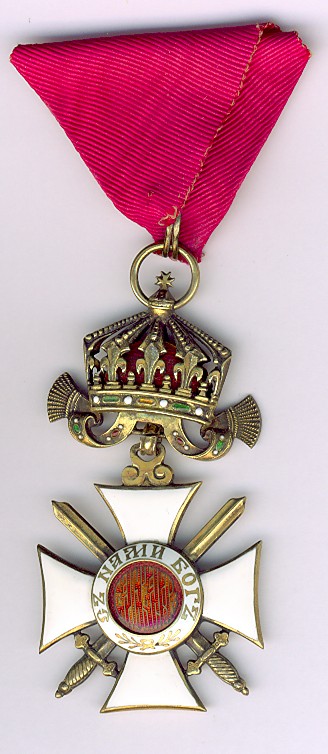

This is a very nice medal, Deruelle. I've been looking for one very similar to this (Model 2 with crown and swords). (I prefer the swords through the center of the medal as opposed to the ones with the swords between the top of the medal and the crown.)
0 -
Hi,
I was recently doing a bit of research on the awards of Nazi Field Marshalls. So far I have discovered that at least 3 of Hitler's Field Marshalls (and 1 Generaloberst) were awarded the Prussian Order of the Crown either before or during WW1:
*A) FM Werner von Blomberg (2 awards: a) 4th class (presumably without swords) and b) "4th class with swords and crown")
B) FM Gerd Von Rundstedt (4th class) (no mention of swords)
C) FM Fedor Von Bock (4th class) (no mention of swords)
D) Generaloberst Ludwig Beck (4th class) (no mention of swords)*I found 3 different Internet websites that contained a list of Blomberg's awards. All 3 of these websites listed Blomberg as being the recipient of two different versions of the Prussian Order of the Crown: Version 1) Order of the Crown, 4th class (no swords) and 2) Order of the Crown, 4th class with Swords and Crown (Prussia). (All 3 lists were identical (exact same words, same order, same everything) so all 3 lists came from a common source.)
I would normally presume that "4th class" (no mention of swords) means "4th class without swords". However, I thought most military officers received the "with swords" variant. Thus, I want confirmation. Unfortunately, all of my information came from the Internet. Hopefully, someone who has access to more reliable information can provide more reliable information in regards to whether each of these awards was issued "without swords" or "with swords".
QUESTIONS: (all questions can be answered with 1 word)
1a) Was Rundstedt's award with or without swords?
1b) Was Bock's award with or without swords?
1c) Was Beck's awards with or without swords?
2a) Did Blomberg receive "one" or "two" variants of the Prussian Order of the Crown? (variant 1 = no swords, variant 2 = swords).
2b) If the answer to question 2a) is "two (or 2)", was the 2nd variant "with swords" or was it "with swords and crown"?
2c) Is there a variant of the "Prussian Order of the Crown" that comes with both "swords and a crown"? I've never seen one. If anybody has one, please post a photo.
3) In regards to the "Prussian Order of the Crown with swords", was the "with swords" variant only awarded during wartime?
This is a lot of questions (7), but each question can be answered in a single word. However, feel free to use more than one word if you wish.)
Thanks,
David
0



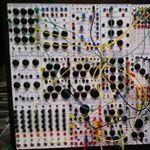
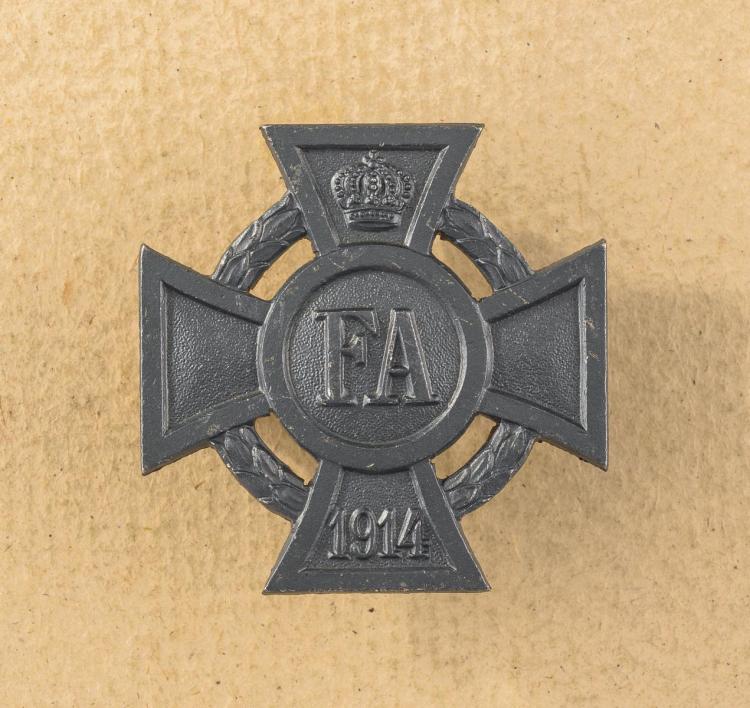
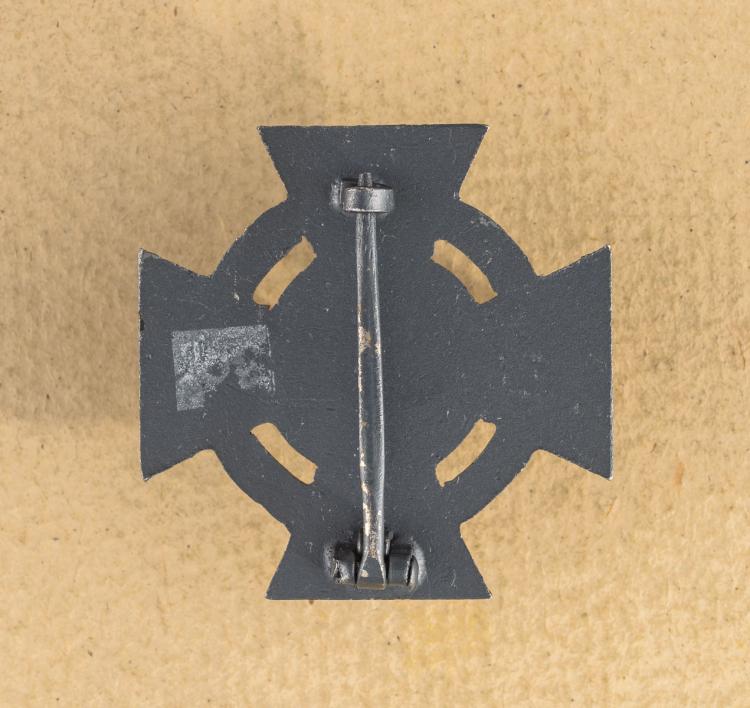


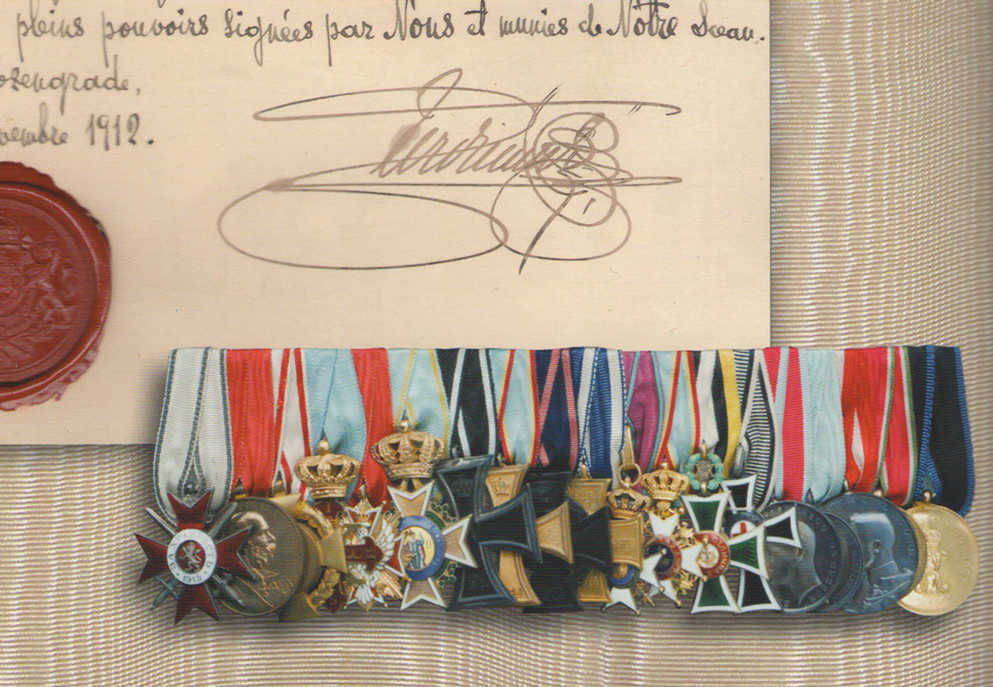

F.thumb.jpg.d48815edda3f3e9fbf75766ed54b93b5.jpg)
R.thumb.jpg.e1d734b920f146770bc2f0370569dd27.jpg)

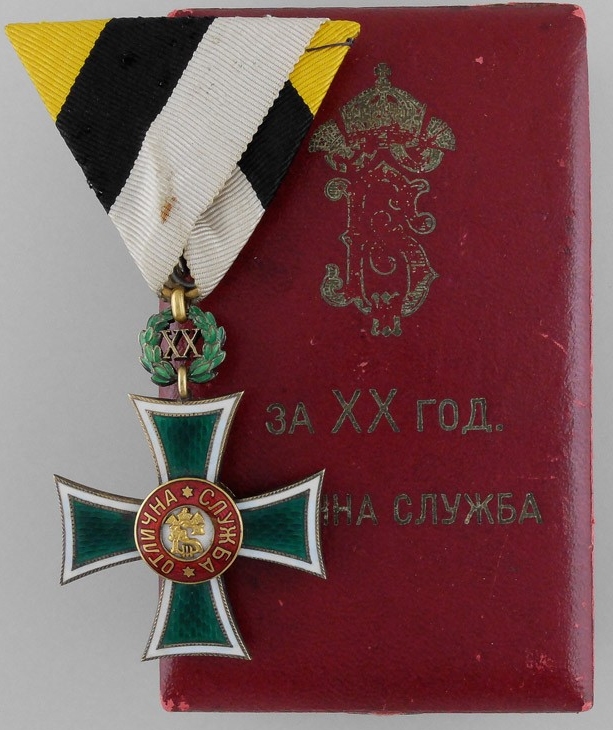
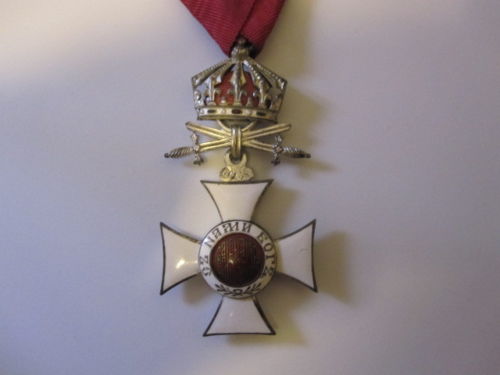
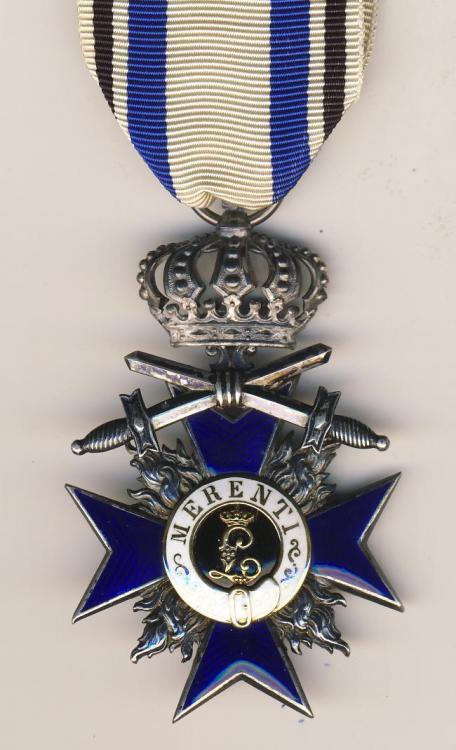
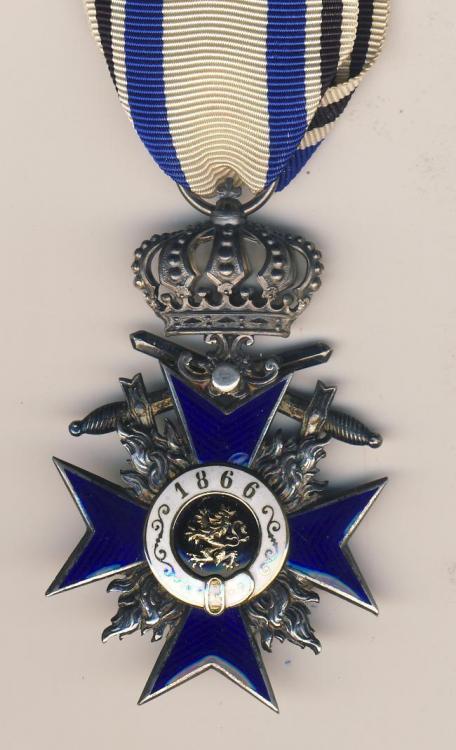
THE ROMANIAN'COMMEMORATIVE CROSS OF THE 1916 - 1918 WAR.
in Central & Eastern European States
Posted
Unlike the other photos, the last cross in this series of photos is entirely one color: a yellowish bronze or brass This leads me to a question. When these crosses were originally issued were the grids inside each cross arm (and the grids inside the center circle) coated with a dark or blackish lacquer (like a Brunswick War Merit Cross or an Iron Cross)? Or did the gridded areas become dark overtime as a result of dirt, tarnish, etc. I always assumed that the gridded areas were blackened, but the photo of the last cross made me wonder. (Of course, someone could have cleaned this cross and removed the original black lacquer.)
Just curious ....